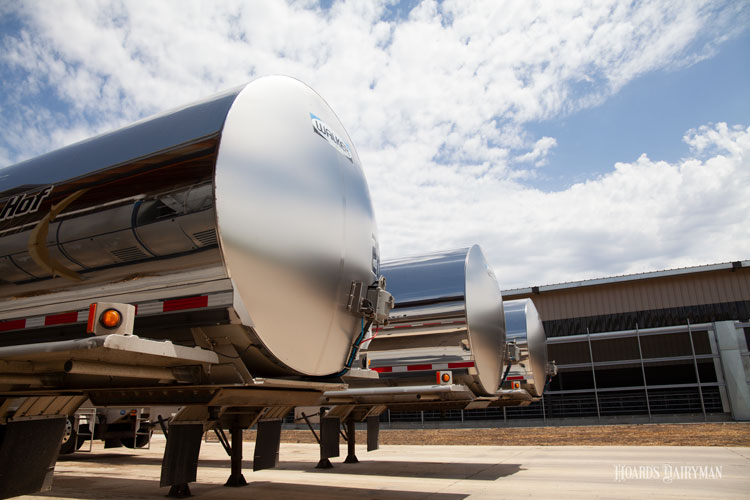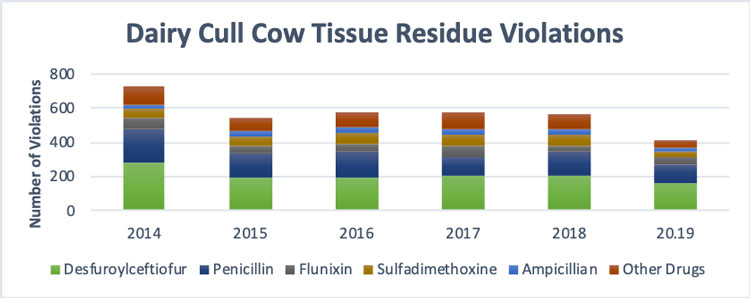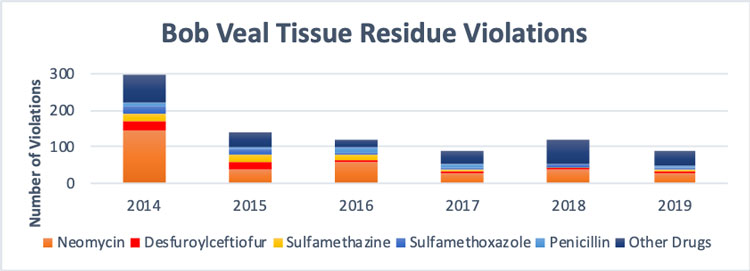
The United States dairy industry has made great improvement in recent years in reducing antibiotic residues. In the past quarter century, the sector’s hard work has allowed it to cut milk truck residues by more than 90%. Tissue residue violations in cows have been cut by 45% in just five years.
These results warrant some tempered applause. Applause because of the great strides made in such a short time but tempered because dairy cows and bob veal represent 83% of all tissue residue violations across all meat — beef, pork, poultry, sheep, and goats.
A story for the consumer
News of these improvements, sadly, hasn’t yet penetrated the public’s consciousness. From reading headlines and social media, it would be easy for a consumer to believe that dairy farmers dump pound after pound of antibiotics in animal feed and water, leading to food products with high levels of antibiotics on store shelves.
Of course, that’s untrue: Contrary to what “antibiotic-free” labels on store shelves may mislead consumers to believe, all milk offered for sale must be tested for antibiotics in accordance with the Pasteurized Milk Ordinance. In fact, when a milk truck tests positive for an antibiotic, the farmer loses the value of that milk and must pay for any other farmers’ milk that was contaminated.
A dairy farm even can lose its license to sell milk temporarily or permanently if it has multiple infractions. The truth is, government data proves that dairy farmers are doing a great job in reducing antibiotic residues in milk. Since 1996, the rate of milk truck residues has declined by more than 90% to only one in 11,000 tankers in 2019.

Dairy farmers are beef and veal farmers as well. Each year, dairy farmers sell more than 3 million cows for beef and a half million calves for veal. Just as with milk, animals with antibiotic residues can’t legally be sold for slaughter. USDA Food Safety Inspection Service meat inspectors use risk-based sampling to test for residues in meat. And again, government data proves that dairy farmers are doing a great job at reducing tissue residue violations. From 2014 to 2019, tissue residue violations in dairy cows declined by 45% and in bob veal by 73%.


The Farmers Assuring Responsible Management (FARM) program standards have helped drive this dramatic improvement. Since the beginning, the veterinarian-client-patient-relationship (VCPR) has been the first question in the FARM Animal Care Evaluation. The VCPR is the foundation that leads to the herd health program developed with your veterinarian, which includes use of antibiotics to treat disease along with milk and meat withdrawal times.
Finally, effective record keeping helps reduce the probability of inadvertently sending an animal to slaughter that has an antibiotic residue. For more detailed information or just a way to begin implementing an effective system, the FARM Residue avoidance manual and record keeping templates may be an invaluable resource.
It’s time to take a bow and hear the applause about the great strides the dairy industry has made in reducing antibiotic residues. Yet, we must continue to improve antibiotic use and record keeping to accelerate the reduction in residues. That will lead to a standing ovation at the end of the second act.







